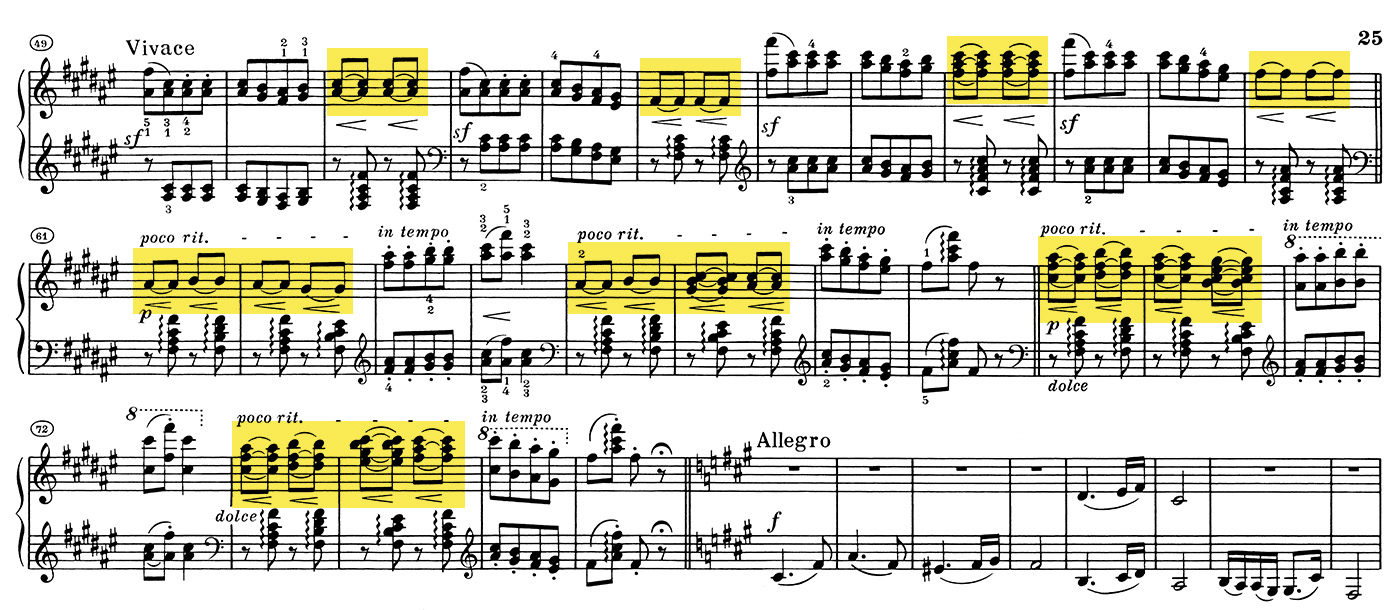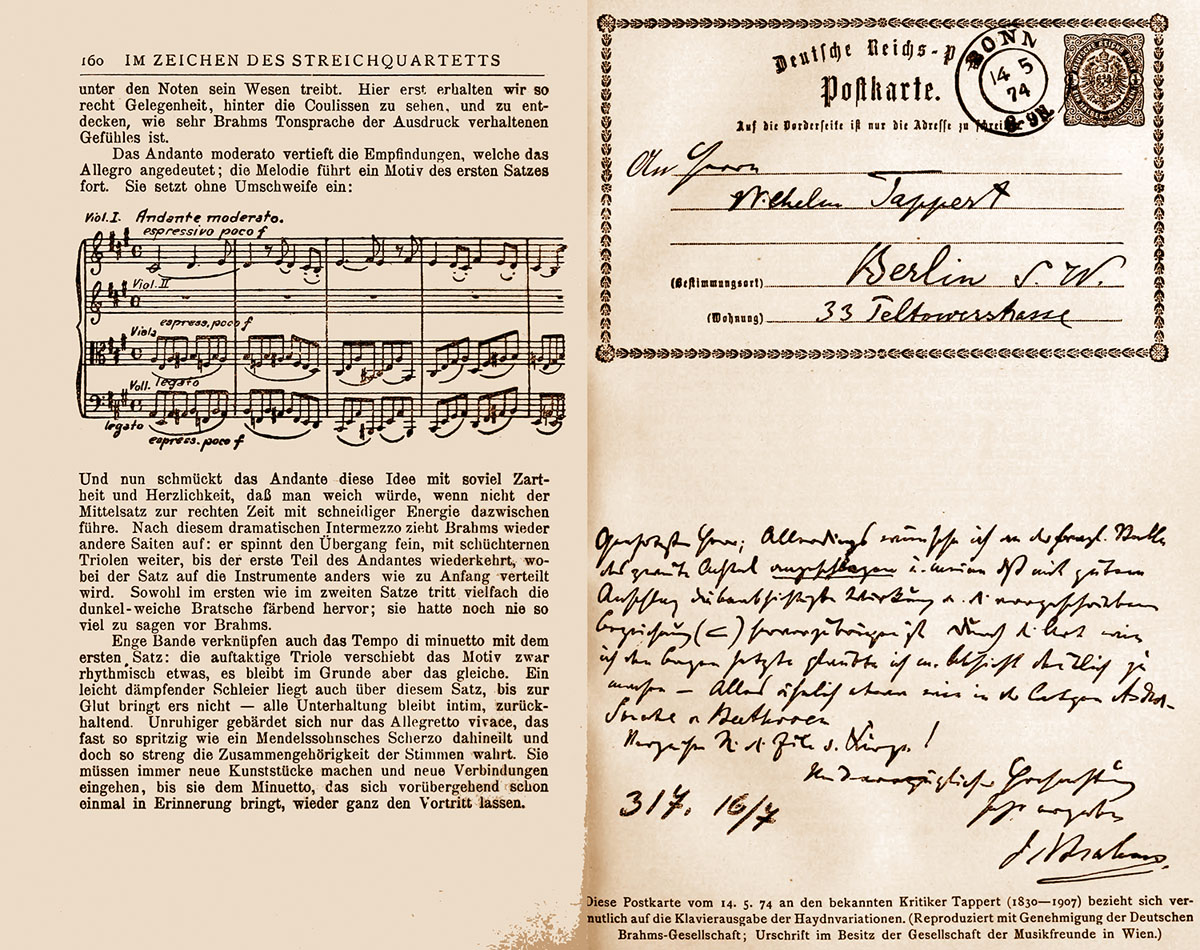In 2011 the Brahms researcher Michael Struck made a striking discovery – in a book published already 100 years ago…
As Urtext publishers it’s of course our duty to keep our entire catalogue up to date with the current state of research. Even editions on hand for decades are regularly checked and revised where needed when new, relevant sources for a work show up or source evaluation should be changed (see on this our blog of October 15, 2012).
As a result, new insights sometimes arise that do not in fact directly affect the music text, but provide valuable performance indications for the player and deserve a place as a footnote or an afterword. So it happened that in 2011 Michael Struck, musicologist and staff editor of the Brahms Complete Edition, made an utterly astonishing discovery in an old book: In the study, ‘Johannes Brahms’, by the music writer Wolfgang Alexander Thomas-San-Galli, published already in 1912, a postcard from Brahms is reproduced for all to see, but its exact content had been ignored for a century.
This, admittedly, was also owing to three circumstances: first, to Brahms’s barely readable handwriting (see for yourself…); second, to the incorrect assessment in the caption by Thomas-San-Galli who assumed that it had some bearing on Brahms’s ‘Haydn Variations’; and third, to the context missing here since Brahms is apparently answering a question not made known to us.
Michael Struck was now able not only to decipher the complete text, but also, despite the misleading caption, to assign with investigative skill the correct content, although Brahms’s telegraphic-style answer did not mention the title of any work. The astonishing outcome was that here Brahms is clearly taking up a very well known passage in his four-hand Hungarian Dance No. 5 over whose precise execution generations of pianists have fretted. These are the phrased eighth notes in the middle section (primo part) of the dance highlighted in yellow in the following music example (click on image to enlarge):

Normally, we would read these slurs as ties and therefore play the 2 eights as a quarter note, as can be heard, for instance, in this recording. Yet with the slurs Brahms actually intended something entirely different, namely a repetition of the note with free, quasi ‘recitative’ phrasing. In his notation he is thereby following Beethoven’s example, to which he explicitly refers in the postcard, that is, to the recitative measure at the start of the closing movement of Beethoven’s A-flat major sonata, Op. 110 (reproduced here from our Urtext edition HN 363):

A correspondingly correct execution by Brahms’s lights would thus sound something like this.
Of course, this fascinating insight cannot be left out of our Urtext edition of Brahms’s Hungarian dances (HN 68), and so before long a reprint of the edition will be augmented with an informative afterward by Michael Struck. There you will then be able to find out about other interesting details – and even the precise wording of Brahms’s postcard…

